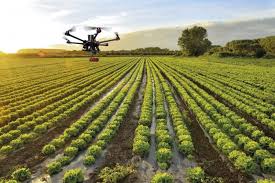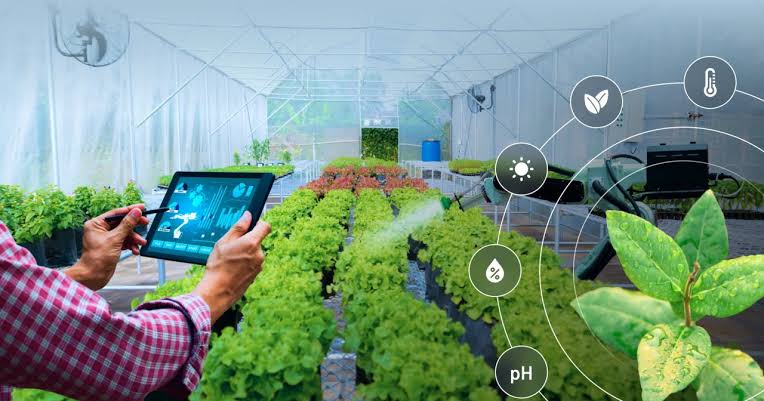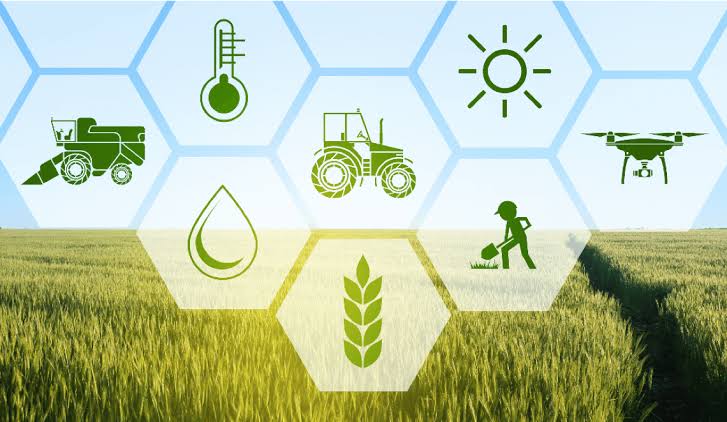Precision Agriculture is a smart way of farming. Farmers use special tools and technology to help them grow crops and raise animals. It’s like using a magic wand to make farming better and easier. In Precision Agriculture, farmers use computers and gadgets to plan and do their work. They know exactly what their crops need, like water, fertilizer, and sunshine. They don’t waste anything, which is good for the Earth.
These gadgets are like super eyes and ears. They watch the crops and animals all the time. They can see when something is wrong, like if a plant is sick or a cow is unhappy. Farmers can fix the problems quickly.
This type of farming is like a puzzle. Farmers put all the pieces together to make their farms run smoothly. They use GPS to know where everything is. They use drones to see from high up in the sky. They use robots to do tough jobs. It’s like a team of helpers working with the farmers.
Not only does Precision Agriculture help the farmers, but it also helps the planet. Farmers use less water and chemicals, so the Earth stays healthy. They also make more food with less effort. That means we can have yummy fruits and veggies on our plates.
Precision Agriculture is like farming of the future. It’s high-tech and super smart. It’s good for the farmers, the Earth, and for all of us who love to eat fresh, tasty food.
Read Also: General Principles of Goat Production
What are the Steps to Implement Precision Agriculture?

Implementing Precision Agriculture involves several important steps to make farming more efficient and productive. Here are the key steps to implement Precision Agriculture:
1. Farm Assessment: The first step is to assess your farm’s current status. Understand the size of your farm, the types of crops or animals you’re raising, and the resources available.
2. Data Collection: Collect data about your farm. This includes information about soil quality, weather patterns, and crop health. You can use sensors, drones, and satellite imagery to gather this data.
3. Select Technology: Choose the right technology for your farm. This can include GPS guidance systems, drones, and automated machinery. Make sure the technology aligns with your specific needs.
4. Data Analysis: Analyze the data you’ve collected. This helps in understanding the unique needs of your farm. You can identify areas that require attention, such as soil that needs specific nutrients.
5. Create Prescription Maps: Use the data to create prescription maps. These maps guide the application of resources like water, fertilizers, and pesticides precisely where they are needed, reducing wastage.
6. Invest in Precision Equipment: Purchase and install the necessary precision equipment. This may include GPS-guided tractors, automated irrigation systems, and sensors for monitoring various aspects of your farm.
7. Training: Train yourself and your farmworkers on how to use the technology and follow the prescription maps. It’s important that everyone involved understands the new techniques and equipment.
8. Implementation: Begin using the technology and following the prescription maps in your day-to-day farming activities. This involves precise planting, fertilizing, and harvesting according to the data-driven plans.
9. Data Monitoring: Continuously monitor the data and make adjustments as needed. Precision Agriculture is an ongoing process that requires regular updates and refinements.
10. Evaluate Results: Regularly assess the results of your Precision Agriculture practices. Compare yields, resource usage, and costs with traditional farming methods to ensure that you’re achieving the expected benefits.
11. Adapt and Improve: Based on your evaluation, adapt your Precision Agriculture practices and technology. Seek opportunities for improvement and implement changes accordingly.
12. Record Keeping: Keep detailed records of all activities and data. This documentation will help in making informed decisions in the future and can also be useful for compliance and reporting.
13. Share Knowledge: Collaborate with other farmers and agricultural experts. Share your experiences and learn from others in the Precision Agriculture community.
By following these steps, farmers can gradually transition to Precision Agriculture and enjoy the benefits of increased productivity, resource efficiency, and sustainability in their farming practices.
Read Also: History and Distribution of Goats
Benefits of implementing Precision Agriculture

Implementing Precision Agriculture offers a wide range of benefits for farmers and the agricultural industry as a whole. Here are some of the key advantages:
1. Increased Productivity: Precision Agriculture allows for more efficient use of resources, resulting in higher crop yields and better animal production. Farmers can tailor their practices to suit the specific needs of their fields or livestock.
2. Resource Efficiency: By applying resources like water, fertilizers, and pesticides more precisely, there is less wastage. This not only reduces costs but also helps conserve valuable resources and protect the environment.
3. Cost Reduction: Precision Agriculture can lead to cost savings through reduced resource usage, improved labor efficiency, and lower maintenance expenses for machinery and equipment.
4. Environmental Sustainability: Precision Agriculture promotes sustainable farming practices by minimizing the environmental impact of agriculture. It reduces the use of chemicals, minimizes soil erosion, and conserves water resources.
5. Improved Crop Quality: By ensuring that crops receive the right amount of nutrients and care, the quality of produce is enhanced. This can result in higher market prices and increased customer satisfaction.
6. Risk Management: Precision Agriculture helps farmers anticipate and mitigate risks. Advanced monitoring and data analysis can provide early warnings about issues like disease outbreaks or adverse weather conditions.
7. Optimized Irrigation: Precision Agriculture enables efficient irrigation practices, reducing water consumption while maintaining crop health. This is particularly valuable in regions with water scarcity.
8. Data-Driven Decision Making: Farm data and analytics allow for informed decision making. Farmers can adjust their strategies in real-time based on accurate information.
9. Increased Profitability: By improving productivity and reducing costs, Precision Agriculture often leads to higher profitability. It also helps stabilize income by reducing the impact of unpredictable factors.
10. Reduced Labor Intensity: Automation and smart technology can reduce the physical and time-intensive work associated with farming, making it more attractive for the next generation of farmers.
11. Compliance and Reporting: Precision Agriculture practices often help farmers meet regulatory requirements more easily. Detailed records and data tracking aid in compliance and reporting.
12. Global Food Security: As the global population continues to grow, Precision Agriculture plays a crucial role in ensuring a consistent food supply. It allows farmers to produce more food on existing land without expanding into ecologically sensitive areas.
13. Technology Advancement: The adoption of Precision Agriculture drives innovation and technology development in the agriculture sector. This, in turn, benefits farmers by providing them with access to cutting-edge tools and solutions.
14. Customization: Farmers can tailor their practices to suit the unique characteristics of their fields, optimizing crop growth and livestock management.
15. Data Sharing and Collaboration: Precision Agriculture encourages collaboration and data sharing among farmers, researchers, and organizations. This can lead to a wealth of knowledge and expertise that benefits the entire industry.
In summary, Precision Agriculture enhances the sustainability, productivity, and profitability of farming while minimizing the environmental impact. It is a win-win for farmers, consumers, and the planet.
Read Also: Garbage Bags: A Step-by-Step Guide

